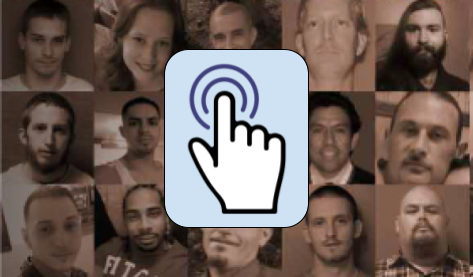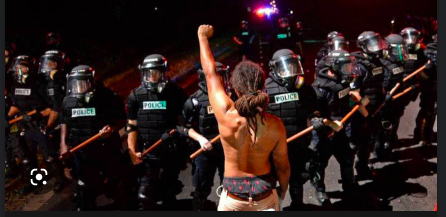6.1 Chapter Overview
2020 was a year that forced us all to reflect on what health and safety means to our communities. At its start we witnessed the beginning of the COVID-19 pandemic. It became startlingly apparent that the United States government was unprepared to deal with COVID-19 in an efficient and effective way. Stay-at-home mandates, or lockdowns, were present in many states across the country, but most families were not equipped with the resources or abilities to do so.
Because of this, domestic abuse rates in the United States saw a drastic increase with lockdowns and pandemic restrictions (Mineo 2022). Additionally, many people were forced to continue to work and expose themselves to COVID-19. Hospitals were, and as of the publishing this text, continue to be overflowing with patients in some areas because of the mass increase in hospitalizations. In 2022, over one million people have died from COVID-19 within the United States alone as the pandemic continues (Worldometers 2022).

Figure 6.1. Photo: U.S. Two Army Specialist Corporals register people at a COVID-19 Mobile Testing Center in New Rochelle, NY, Mar. 14, 2020.
This inefficiency of our response to COVID-19 has had devastating consequences throughout the world. Policies and patents that originated in the United States regarding vaccine exportation made it nearly impossible for countries with residents who are of the global majority, like India, to efficiently handle COVID-19 within their country. Our for profit healthcare system had harmful effects that resulted in the unnecessary deaths of people around the world and domestically. Devastatingly, the profit of companies that placed patents on these vaccines was prioritized over saving lives.
Additionally, communities in the United States suffered needlessly. While some states acted swiftly to provide vaccines and mask mandates (figure 6.1) others provided little to no resources for their residents. This resulted in unequal and sometimes inaccurate depictions of how COVID-19 was spread throughout the country.

Figure 6.2 linkable screenshot image of the 2021 Police Violence Report
Then, the murder of George Floyd in May 2020 by the police sparked uprisings against police brutality to an extent we had not seen before. It became more brutally apparent that as a nation we still have not found a consistent and compassionate way to respond to crises around public safety. More people were killed by police in 2021 than almost any other year in recent history, as shown in figure 6.2.The racial bias that exists with this use of force is persistently disproportionate, as most unarmed people killed by police are people of color (Mapping Police Violence 2021). Take a few minutes to browse through the 2021 Police Violence Report by the organization Mapping Police Violence. What stands out to you in the data they present?
Both of these realities in health and safety sparked national civil society action. Because of the state’s lack of response to COVID-19, many community members across the nation stepped up to form mutual aid organizations to fill in the gaps. These organizations popped up in every state and were responsible for providing food, personal protective equipment (PPE), COVID-19 tests and many other material or emotional support to people who were otherwise unable to access state resources. In this way, dozens of communities came together to take care of each other.
For example, the Confederated Tribes of Grand Ronde in Oregon was motivated to help drive the nation out of the pandemic and delivered vaccines to people in spring of 2021, regardless of their tribal status. They provided 12,000 vaccines and focused on frontline workers and others who were not yet eligible for the shot under state guidelines (Kisiel 2021)

Figure 6.3 Braxton Winston protesting the police killing of Keith Lamont Scott and police use of excessive force in Charlotte, North Carolina in 2016. Winston was elected to Charlotte city council five years later.
After the death of George Floyd, followed by Daune Wright and other Black women and men, thousands of people took to the streets in every major city demanding an end to police brutality. Many called for total abolition and systemic change. Others called for reform. While protests against police use of force have been ongoing for years (figure 6.3), the protests of 2020 proved pivotal.
The result was the defunding of a few police departments in the United States, with many more remaining as funded or increased in funding in the aftermath (Manthey et al., 2022). However, what did change was the discussion of how to implement abolition of the prison industrial complex (PIC) to the national stage. The abolitionist movement, which originated out of communities organizing to abolish chattel slavery, is not new but its energy was reignited by the uprisings. Today, people from across the country work together to figure out ways to build safety in their communities without the use of police, prisons, violence, and punishment.
This chapter examines three institutions designed to provide health and safety in society: healthcare, social services, and government. We’ll explore circumstances by which health care and social services, including the criminal justice system and the incarceration system, can provide health and safety. We’ll also explore how they create and sustain systems of oppression, inequity and injustice. Finally, we’ll identify emerging opportunities for social change in public health care, social services, and policing.
We’ll explore these questions:
- How do sociologists identify the functions of government, health care, and social services in society?
- How do sociologists understand the health of a society through medical sociology, and the social construction of illness
- How and why do groups have different experiences with safety and health protections, and are impacted differently when presented with safety and health crises?
- Explain how government influences health and safety through health care and social service policy.
- Explain how historical events of European colonization shape contemporary issues around health and safety
- Discuss the role of social movements in bringing about change to health and safety in the US
6.1.1 Going Deeper
To read more about the Confederated Tribes of Grand Ronde, see their web page.
6.1.2 Licenses and Attributions for Chapter Overview
“Chapter Overview” by Avery Temple is licensed under CC BY 4.0.
Figure 6.1. Photo of U.S. Two Army Specialist Corporals register people at a COVID-19 Mobile Testing Center
Figure 6.2 linkable screenshot image of the 2021 Police Violence Report
Figure 6.3 “Winston Image 03” by Braxton David Winston, J. Murrey Atkins Library Special Collections and University Archives, Levine Museum of the New South is licensed under CC BY 4.0.
